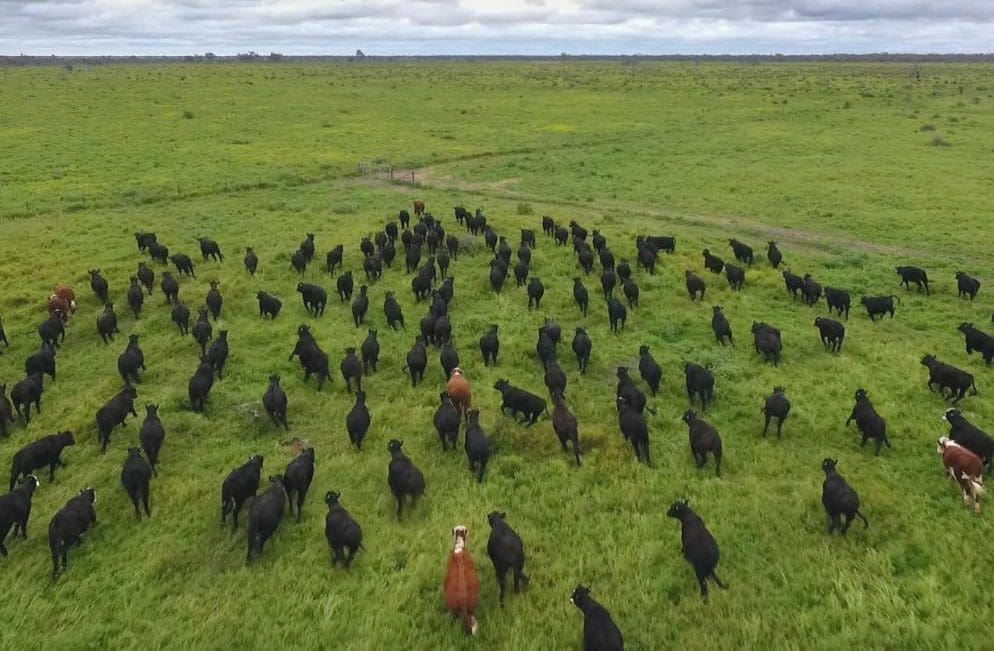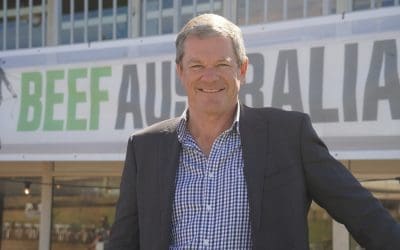
Cattle on Paraway’s Pier Pier Station.
WHILE offshore institutional investors have been active in the Australian ag space (see this weekly property review published a fortnight ago), Australian superannuation funds have continued to come under scrutiny over their lack of appetite for domestic agricultural investment.
This week’s property review examines the reasons underpinning their lack of investment interest.
It appears the only Australian corporate directly investing in local ag assets is the Queensland government-backed investment fund, QIC which holds an 80 percent stake in the North Australian Pastoral Co, secured back in 2016.
Separate from its NAPCo stake, QIC earlier this month purchased Roma district grazing property Stuart’s Creek – the last remaining asset held by regenerative ag-focussed Packhorse Pastoral Co – as a foundation asset for its new Nature Capital Fund, established last year.
No price was disclosed, but as a guide Packhorse paid $30 million for the 8400ha holding in July 2021, including 800 breeders valued at around $3m.
QIC’s Nature Capital Fund has so far made one other acquisition – a 600ha irrigated sugarcane property south of Mackay.
Some might argue that Macquarie Bank’s Paraway Pastoral is another Australian institutional investor, as it is one of the country’s largest property owner-operators.
But the agricultural fund comprises mostly international institutional investment – so in reality, it is an Australian business managing foreign capital.
Set out below, two property investment & finance experts – David Goodfellow and Michael Whitehead – who have been involved in raising capital for institutions, give their insight into the likely future investment strategies of Australian superannuation funds.
David Goodfellow
David Goodfellow has built his career around helping people invest successfully into Australian agribusinesses.

David Goodfellow.
After leaving CBRE Agribusiness earlier this year, he took on the role of independent non-executive director on the boards of four large agricultural corporations – three of which are tapping into foreign capital to support further growth and development.
Mr Goodfellow says the reason why global superannuation funds appear to be more attracted to Australian agribusiness investment opportunities is mostly due to the differences in overseas fund structures.
“Australia has an ‘accumulation’ fund structure, which means during a person’s employment, their remuneration is invested into a specific account within a superannuation fund,” he said.
The balance of that account accumulates over time and is ultimately dedicated to that person to fund their retirement.
“During retirement, the accumulated wealth is sold down on a monthly basis to provide cashflow to cover living expenses that were once provided by a salary.”
In comparison, in North America (the United States and in particular, Canada) a defined benefit fund structure is typically used.
Mr Goodfellow explained that this retirement benefit is determined by a formula relative to a person’s salary during their final three years of employment.
“If a global superannuation fund determined you averaged $100,000 a year and the defined benefit was set at 70 percent, then $70,000 would be paid to you (on an annual basis indexed for inflation) for the rest of your natural life.”
“Upon your death, the benefit would be immediately dissolved. With Australia’s accumulation fund structure, the beneficiaries are handed the remaining balance.”
Huge value in diversification
Mr Goodfellow said these global superannuation funds needed to ensure they can make monthly payments to retired clients, every month and every year, regardless of the performances of the shares, bonds and commercial property markets.
“They see huge value in building diversification into investment portfolios and have worked out that returns from agricultural industries have a very low correlation to the return from those more common asset classes.”
 He said while there may be massive investments made in Australian agriculture by foreign superannuation funds, they often represented only a small portion of their overall portfolios.
He said while there may be massive investments made in Australian agriculture by foreign superannuation funds, they often represented only a small portion of their overall portfolios.
“For instance, a major overseas superannuation fund with $100 billion under management with a four percent allocation (say $4b) into global agriculture may spend just one percent (of their entire portfolio) in Australia, which equates to $1b.”
Mr Goodfellow said $1b may appear to be an enormous sum, but for these large and successful overseas superannuation funds, it was not a huge percentage.
“If they love the investments they have made in Australian agriculture, they could easily double that allocation to two percent without jeopardising the monthly performance of the overall portfolio.”
Big investors are able to offset the risks of agriculture by investing the remainder of the massive portfolios in shares, bonds or infrastructure assets, he said.
“If agriculture experiences some tough years, hopefully those other asset classes are performing well. The global superannuation fund managers understand that by riding out the highs and lows over the long haul, the overall returns of investing in agriculture are very good.”
Australian corporate investment
Mr Goodfellow said in Australia, assets needed to be sold down from an individual’s account to fund retirement and this was exacerbated by employees who can choose to take all their investments from one superannuation fund and transfer them to another.
“Therefore, the focus for Australian public superannuation fund managers is on maintaining very high liquidity in each portfolio, which means investing almost exclusively in liquid investments.”
The ASX market provided the liquidity Australian superannuation funds need.
“Even if the market is down, shares can be sold quickly. Indeed, the performance of the ASX typically affects all superannuation funds at about the same rate.”
Mr Goodfellow said Australian superannuation funds did value some diversification.
“When the agricultural sector is doing it tough financially, it can be difficult to sell farms at good prices – which is what happened during the 1990s.”
“On the flip side, when Australian agriculture is doing brilliantly, it is difficult to buy properties, so the agriculture sector does not have the liquidity Australian superannuation funds need.”
Most sensible investors in Australian agriculture understood that they needed to ride out the tough waves, so they are still invested when the great times arrive.
“Ag returns can be quite volatile from one year to the next, but over a couple of decades, or over a generation in a family business, the earnings are typically much higher compared to returns from other asset classes.”
Mr Goodfellow said in the 1980s, most Australian super funds (companies like AMP, Prudential and Colonial) were actually invested in agriculture.
“A tough decade followed during the 1990s, starting with the recession in 1991, a drought, a commodity collapse and then the Asian financial crisis. The volatility caused a number of Australian superannuation funds to panic and withdraw from ag,” he said.
Since then, most public Australian superannuation funds decided to perform relative to the ASX All-Ordinaries Index and that is why they are more focused on investing in ASX shares.
According to Mr Goodfellow, under the current structure, Australian public sector superannuation funds are unlikely to invest directly into agriculture due to the illiquidity in the sector and the lack of correlation to the ASX All Ordinaries Index.
“Over the years, many Australian superannuation fund managers have told me they are quite optimistic, not negative, about agriculture – but, unfortunately, it doesn’t suit their mandated investment strategies and governance requirements.”
Michael Whitehead, ANZ
ANZ agribusiness insights boss Michael Whitehead said Australian super funds are dwarfed by some of the big North American and other global pension funds.

Michael Whitehead
“For instance, PSP Investments (Public Sector Pension Investment) is one of Canada’s largest pension investment managers. If you compare its scale to most Australian funds, there is a huge difference.”
He touched on the topic of domestic institutional investment in ag during his recent Queensland Rural Press Club address in Brisbane.
Mr Whitehead said the big global investors may have investments in Australia, but they may also have agricultural investments elsewhere, such as South America and North America.
“Each of these markets comes with their own unique sets of regulations and features – arguably Australia provides relatively less restrictive processes than a number of other places,” he said.
Mr Whitehead said while Australian super funds were keen to invest, agriculture could be perceived as volatile in terms of weather and commodity prices.
“To be clear, a growing number of Australian super funds are investing in the agri landscape. This includes major entities such as QIC and Aware Super with specific agri projects, while other funds may look to place their investment in a wider agri management vehicle.”
Mr Whitehead said these funds were keen to know what the metrics are and how the industry works, but due to smaller scale, may be less likely to invest.
“Investors have fiduciary duties to achieve the best long-term returns for shareholders and as a result, some domestic super funds may not be prepared to take agriculture on board.”
He said the same view wasn’t shared by all offshore investors.
“Australia agriculture has a fantastic global reputation in terms of being clean and green.”
In terms of long-term agricultural production, Mr Whitehead said the industry ticks many boxes.
“Australia has a lower political risk, the operations are large-scale and the industry is not government-subsidised, which means Australian producers are efficient and that is what makes them world leading.”
He said it doesn’t necessarily matter that Australian super funds are large absent from the ag property market.
“Any institutional investment into agriculture is great for our position in world markets and continues to employ Australians right down the supply chain.”
“Additionally, domestic agriculture is also seeing increasing levels of investment from a number of ultra-high net worth Australians, including both direct investment, as well as through family offices.”



HAVE YOUR SAY